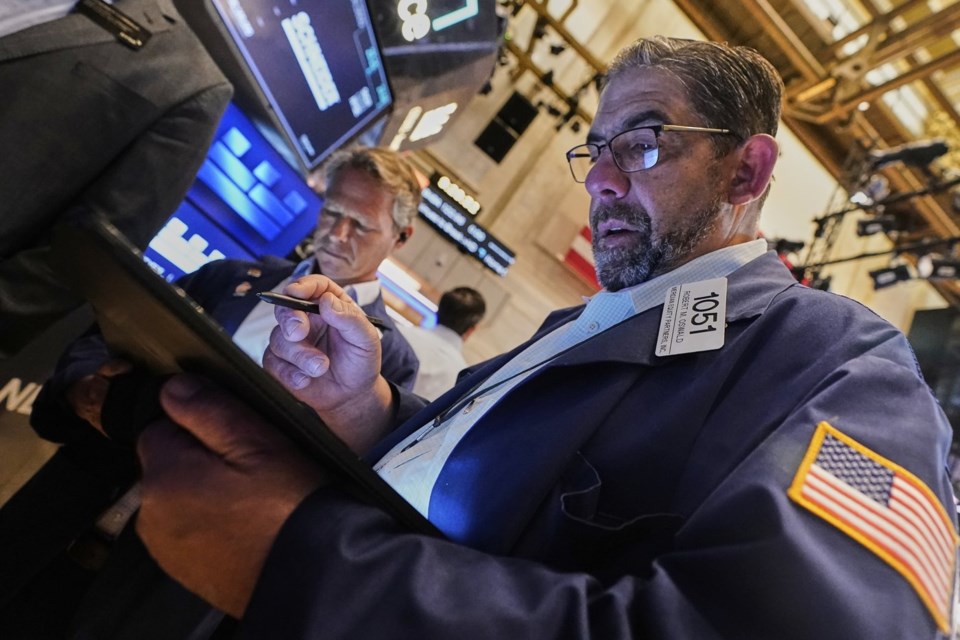NEW YORK (AP) — is pushing stocks to sink again on Friday, this time after that could begin in a little more than a week.
The S&P 500 was down 0.9% in early trading and on track for its worst week in the last seven. The Dow Jones Industrial Average was down 366 points, or 0.9%, as of 9:35 a.m. Eastern time, and the Nasdaq composite was 1.2% lower.
Trump threatened the tariffs before the U.S. stock market opened, saying on his Truth Social platform that trade talks with the European Union “were going nowhere” and that the “straight 50%” tariffs would go into effect on June 1. The European Union is one of the United States’ largest trading partners.
Stocks fell immediately afterward in Europe, with France’s CAC 40 index losing 2.7%, and the threat shook the futures market for U.S. stock indexes, which had been indicating only a modest move at the open of trading.
Apple fell 2.2% and was one of the heaviest weights on the S&P 500 after Trump went after the company specifically. He said it will need to pay a 25% tariff on iPhones that are not manufactured and built in the United States.
Trump has been criticizing companies individually when he’s frustrated with how they’re acting because of his tariffs and because of the uncertainty his trade war has created. He earlier along with China, after the retailer said it would likely have to raise prices to cover the increased cost of imports.
Deckers Outdoor, the company behind the Hoka and Uggs brands, became one of the latest companies to say all the uncertainty around the economy means it won’t offer financial forecasts for the full upcoming year. Instead, it gave forecasts only for the upcoming quarter, and they fell short of analysts’ expectations for revenue and profit.
That sent its stock down 22.8%, even though the company reported a stronger profit and revenue for the latest quarter than expected.
Ross Stores fell 12.2% after it pulled its financial forecasts for the full year, citing pressures on its profitability because more than half the goods it sells originate in China. The off-price retailer gave a forecast for profit in the current quarter that included a hit taken from tariffs, and it fell short of analysts’ expectations. That dragged its stock down even though the company also reported a better profit for the latest quarter than expected.
Trump’s latest tariff threats are stirring up Wall Street after it had roared back to recover nearly all its losses because of the trade war. The S&P 500 fell roughly 20% below its record at one point last month, when worries were at their height about whether Trump’s stiff tariffs would cause a global recession. The index then rallied back to within 3% of its all-time high earlier this week after Trump paused his tariffs on many countries, most notably China, and raised hopes that he would strike trade deals with U.S. trading partners.
In the bond market, Treasury yields fell after swinging back and forth a few times. The yield on the 10-year Treasury eased to 4.50% from 4.54% late Thursday. It had been running higher earlier in the week, in part on worries about how could to the U.S. government’s debt.
In stock markets abroad, indexes were mixed in Asia, where markets closed before Trump issued his latest tariff threats.
The price of gold, meanwhile, climbed 1.6% as investors looked for safer places to park their cash.
Stan Choe, The Associated Press




